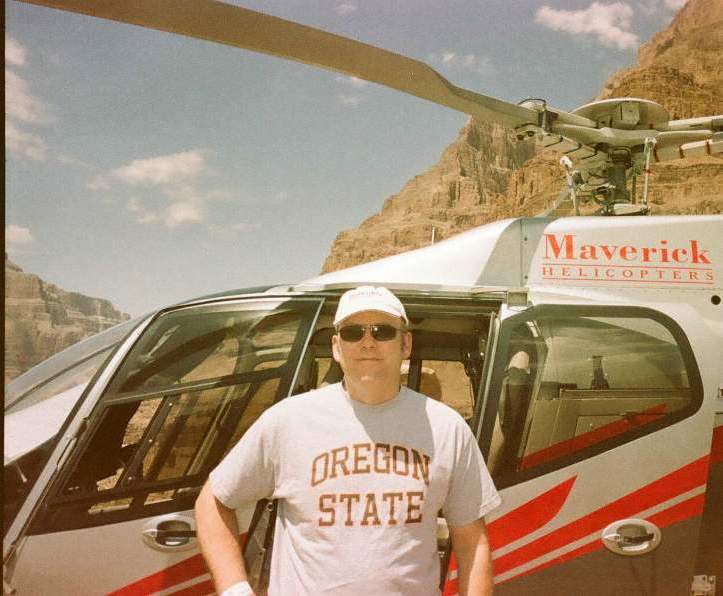Loss of consortium is a recognized cause of action in Oregon. It is critical to have a thorough understanding of the permutations in the marital status of a couple involved in a catastrophic injury such as an aviation disaster where both death and/or serious injury are distinct possibilities. Historically, verdicts for loss of consortium in Oregon have been relatively low, but each case is fact specific. Previously, a verdict awarding damages for loss of consortium exceeding $1,000,000 was rare in Oregon. However, in the last decade verdicts have become less regional in the United States, and the availability of a loss of consortium claim to a spouse and a loss of services claim to a child (a relative of the loss of consortium claim) can have significant impact on the overall verdict. Loss of consortium claims can range upward of $2,000,000.00.
Children’s Loss of Services Claims
If a couple is not married, the children of that deceased couple may still have loss of services claims as beneficiaries under Oregon’s wrongful death statute. A claim for loss of services is a category of uncapped economic damages stemming from the death of either parent. The value of a loss of services claim is usually somewhat higher in cases where the deceased parent was the higher earner.
Parental Claims for Loss of Services of a Minor Child
The right of a parent to sue for an injury to his or her child arises out of the common law right of a master to sue for deprivation of the services of a servant. Oregon codified this cause of action in ORS 30.010(1), which provides that: “A parent having custody of his or her child may maintain an action for the injury of the child.”
A claim for loss of services of a minor child is different than a wrongful death claim brought by a parent due to the death of a child. Pursuant to ORS 30.010(2), “[a] parent may recover damages for the death of his or her child only under ORS 30.020 [the wrongful death statute].”
A parent’s claim for loss of services also allows damages for loss of society and companionship. Beerbower v. State ex rel Or. Health Sci., 85 Or App 330, rev den, 303 Or 699 (1987).
Regarding defenses to such loss of services claims, the contributory fault of the child may bar an action by the parent for loss of services of the child. See Boyd v. Portland Electric Co., 40 Or 126 (1901), overruled in part on other grounds by Ritchie v. Thomas, 190 Or 95 (1950).
No Wrongful Death Damages or Loss of Consortium for Unmarried Cohabitants
Suppose that, during an aviation disaster, one parent, the father, is killed and the mother of a child they have together is also killed. If the couple was not married, the surviving female is not a beneficiary under the wrongful death statute. In Ore-Ida Foods v. Gonzalez, 43 Or App 393 (1979), rev den, 288 Or 335 (1980), the court held that there could be no wrongful death recovery under ORS 30.020(1) (Oregon’s wrongful death statute) for unmarried cohabitants.
Additionally, although not completely settled under Oregon law, an action for loss of consortium appears to be limited to the marital relationship and does not apply to extramarital living arrangements. The general concept under Oregon law that unmarried cohabitants are not entitled to loss of consortium goes all the way back to the lack of common law marriage in Oregon under Huard v. McTeigh, 113 Or 279 (1925).
The theory underlying a claim for loss of consortium is that, by virtue of marriage, a spouse receives certain benefits both tangible, as in material services, and intangible, such as companionship and affection, from the other spouse. Accordingly, when one spouse is injured, the uninjured spouse may lose those benefits and is entitled to compensation. Axen v. Am. Home Prods. Corp., 158 Or App 292, modified on other grounds by 160 Or App 19 (1999). Since 1941, the Oregon legislature has granted to wives the same right to sue for loss of consortium as husbands previously had at common law. ORS 108.010. Ross v. Cuthbert, 239 Or 429 (1965).
Furthermore, as Justice O’Connell suggested in his dissent nearly 50 years ago in Ross v. Cuthbert, the courts do not particularly favor loss of consortium actions. Id. at 441.
No Loss of Consortium for a Surviving Spouse
If we change the aviation disaster case scenario above so that the two parents are legally married, and the husband dies in the aviation crash, his wife is probably not entitled to loss of consortium because the noneconomic damages that the wife is entitled to under Oregon’s wrongful death statute are, under Oregon law, enough to compensate her. Under Oregon law, loss of consortium is only available if the injured spouse is still alive because, in a death case, the personal representative is entitled to seek benefits for loss of society and companionship under the wrongful death statute.
Additionally, if death is instantaneous, no cause of action for loss of consortium arises. Harp v. Montgomery Ward & Co., 223 F Supp 780 (D Or 1963).
Damages can be recovered for any suffering between the time of injury and the time of death. However, even if the court were to theoretically allow the surviving spouse to proceed with a loss of consortium claim, assuming she is able to satisfy all conditions precedent, defense lawyers can argue that the surviving spouse’s claim (and child’s loss of services claim) would be subsumed and provided for under the wrongful death statute. Oregon’s wrongful death statute compensates “for pecuniary loss to the decedent’s estate”. ORS 30.020(c). It also compensates “the decedent’s spouse [and] children * * * for pecuniary loss and for loss of the society, companionship and services of the decedent.” ORS 30.020(d).
If, however, the husband survives, and he and his wife are injured, they both have the right to bring a cause of action for loss of consortium and allege loss of society and comfort. These are not available in the above scenario where the spouse dies because the permanent deprivation of society and companionship is fundamentally unavailable, as opposed to the temporary deprivation of society and comfort in an injury case where the spouse survived.
Comparative Fault as a Defense to Loss of Consortium Actions
Oregon’s comparative fault statute, ORS 31.600, may bar a loss of consortium claim (and the lawsuit as a whole) if the injured person’s fault is greater than the combined fault of the defendants. ORS 31.600 provides that:
“Contributory negligence shall not bar recovery in an action by any person or the legal representative of the person to recover damages for death or injury to person or property if the fault attributable to the claimant was not greater than the combined fault of all persons specified in subsection (2) of this section, but any damages allowed shall be diminished in the proportion to the percentage of fault attributable to the claimant. This section is not intended to create or abolish any defense.”
Conclusion
Aviation claims often involve catastrophic injuries. They also often involve accidents where unmarried couples and family members were together when the injuries occurred. In such cases, loss of consortium claims should be carefully evaluated.


